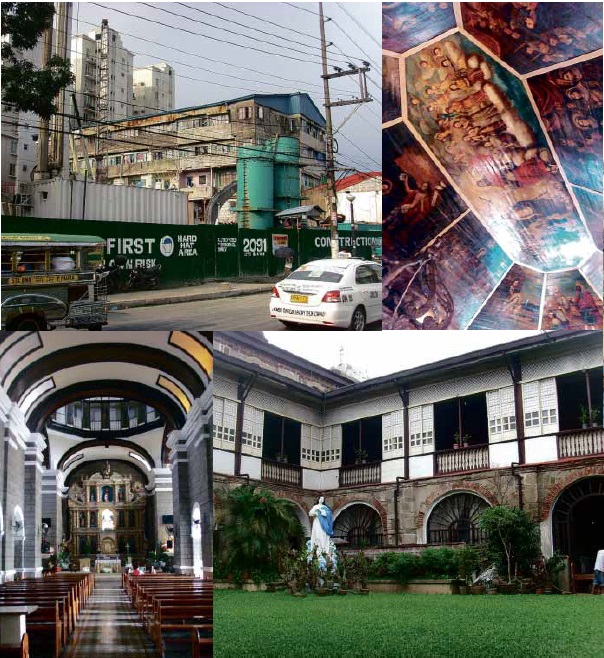
The Sta. Ana Heritage Tourism (Sahta) group welcomed the issuance of a cease-and-desist order by the National Commission for Culture and the Arts (NCCA) against the high-rise development project of CDC Holdings, Inc. on Pedro Gil Street in Sta. Ana Manila, a declared heritage zone.
Sahta head Sylvia Lichauco-De Leon said, work had stopped on the site, part of the district’s archaeological zone.
“For the first time since August last year, the work has stopped,” she said.
“We are not against development, but it has to be in coordination with… rules, especially now that we are a heritage zone,” she added.
De Leon said the CDC Holdings project was being built right on the of “the old La Ignaciana retreat house [of the Jesuits] where José Rizal himself went.”
“So La Ignaciana had a very significant role in Philippine history. Unfortunately it was burned,” she explained.
“All we wanted CDC Holdings to do from the beginning was to comply with archaeological impact assessment and they did not do it,” she added.
Predating Spaniards
Heritage advocates say Sta. Ana, Manila, even predated the coming of the Spaniards since it was a thriving commercial hub before recorded history in the Philippines.
De Leon suggested that the developer had reacted arrogantly to Sahta’s appeal to be careful about the site’s archeological importance.
“[Sometimes] developers are arrogant because they think they can get away with murder, and it’s not right to pile-drive 500 piles in an important site, crushing what artifacts might be there,” she said.
“How hard is it to do archaeological impact assessment when the artifacts have already been crushed! And you have to do the trenches between the piles. That’s why we asked for help from the cultural agencies, and thank God they are there to help us now.”
A historical marker was installed at the La Ignaciana site by the forerunner of NHCP in 1939, but, De Leon said, it was stolen.
A new marker will be installed at the site before the year ends.
Kingdom of Namayan
Sta. Ana is an important historical and archaeological site as it was the former kingdom of Namayan which used to cover what is now Mandaluyong, Makati, Pasay and other parts of Manila.
In 1966, archeological excavations done on the Sta. Ana Church patio yielded 11th-14-centuries artifacts, indicating the place was an ancient habitation and burial site.
The church is also the site museum of the National Museum and a declared National Cultural Treasure (NCT).

Sta. Ana Church interior; church patio, an archaeological site PHOTOS BY EDGAR ALLAN SEMBRANO
Another declared NCT in Sta. Ana is the Camarin de la Virgen, or the dressing room of the Virgin, which has the “oldest painting on oil on wood” in the Philippines.
“Our cultural heritage is so important. Once it’s gone, it’s gone,” said De Leon.
The declaration as Heritage Zone means height limitations on new structures. Buildings should not go higher than the church. But National Museum (NM) assistant director Angel Bautista said the height limitation had yet to be determined.
He added an archaeological impact assessment on the CDC property showed it was “not significant,” although 19th-century artifacts were found in it.
Gota de Leche
Meanwhile, the 1914 Gota de Leche building on Loyola Street in Manila’s Sampaloc district will be declared this month an Important Cultural Property by the NM.
Gota de Leche, which literally means “drop of milk,” is the project of the charitable La Proteccion de la Infancia Inc. founded in 1907. To care for malnourished children, it gives free rations of milk every week.
The building was restored in 2002 by a team led by Inquirer columnist and architect Augusto Villalon. A historical marker was installed on the building by the National Historical Institute, (now NHCP), in 1977 and in 2003.











































